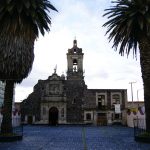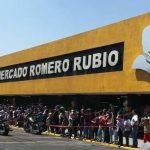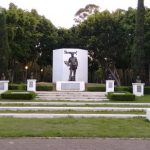 _
_
El Mercado de La Merced es el “mercado tradicional” más grande de la ciudad. Está en el vecindario del mismo nombre, Barrio La Merced, en el extremo oriental de la capital del país. Fue, por muchas décadas, el principal centro de distribución de la ciudad y hoy en día ese puesto lo tiene la Central de Abastos, a unos 25 minutos, ya en el sur de Iztapalapa.
Para la mayoría de los visitantes, el mercado principal es todo lo que necesita la Merced. Las páginas que hemos reunido aquí tienen la intención de hacer más fácil tu visita, y poner un poco de orden al gigantesco mercado en el que estás por entrar. De hecho, La Merced es tan grande que se podría decir que es todo un vecindario de mercados. El tema de está página es solamente la Nave Mayor, por ser la más grande.
Se puede decir que la Merced es la verdadera heredera del famoso mercado de Tlatelolco que existió en la antigüedad. Casi el único método de conservación de alimentos registrado a partir de ese momento fue el secado. Es la parte más importante, y a menudo también la más colorida, que encontrarás en el edificio de la Nave Mayor de la Merced.
El enorme edificio fue creado en 1957 y es reconocido como una estructura históricamente importante. Desafortunadamente, ha sufrido una serie de incendios durante los últimos diez años y otros a lo largo de su historia que han obligado a realizar numerosas reconstrucciones.
Cabe recordar que el mercado actual comenzó justo al norte del Claustro de la Merced, en la actual Plaza Alonso García Bravo. Aunque comenzó alrededor de 1862, la construcción del mercado real no se completó sino hasta 1880. Pasó por algunas iteraciones hasta que el sitio se mudó por completo en 1957. Sin embargo, antes de ese mercado, gran parte del oriente de la Ciudad de México estaba continuamente inmersa en un mercado sobre ruedas que serpenteaba por las calles y cambiaba constantemente. Éste fue finalmente desterrado del Zócalo a fines del siglo XVIII y La Merced fue concebida como una solución a esta situación.
El edificio de la Nave Mayor de 1957 sigue siendo una estructura enorme, aunque se ha construido y reconstruido y se le han instalado equipos para prevención de incendios.
Un detalle curioso es que los techos de la Nave Mayor son tan altos que los comerciantes parecen incapaces de colgar cosas de ellos. Esto contribuye en gran medida a la limpieza general del mercado principal.
Dentro de la Nave Mayor del mercado de la Merced, también hay varios lugares muy buenos para visitar. Un viaje aquí se verá recompensado con creces si consigues una mesa.
Haz click aquí para aprender sobre otros mercados dentro del área de la Merced.
 55 5522 7250
55 5522 7250

Cercano a 0.07 kms.

Cercano a 0.11 kms.

Cercano a 0.12 kms.

A wonderful NEW neighborhood market in C.T.M. Aragón . . .

80 años de historia de Diablos Rojos en un museo fascinante.

Un mercado gigantesco para uno de los mejores barrios del este de la CDMX...

Una caminata de 20 minutos desde el aeropuerto tiene una gran recompensa.

Una de las áreas naturales y recreativas más importantes de la colonia Venustiano Carranza.